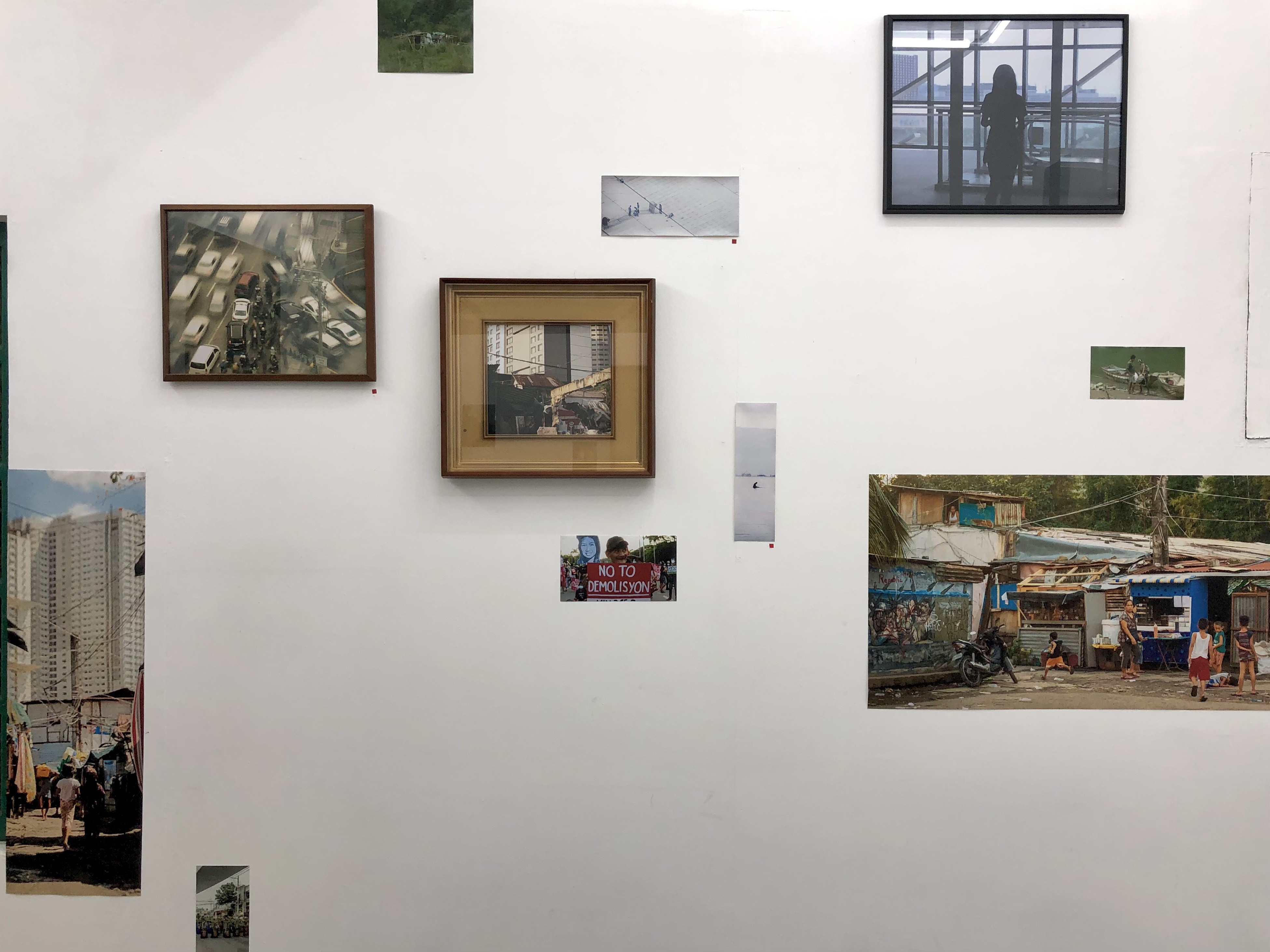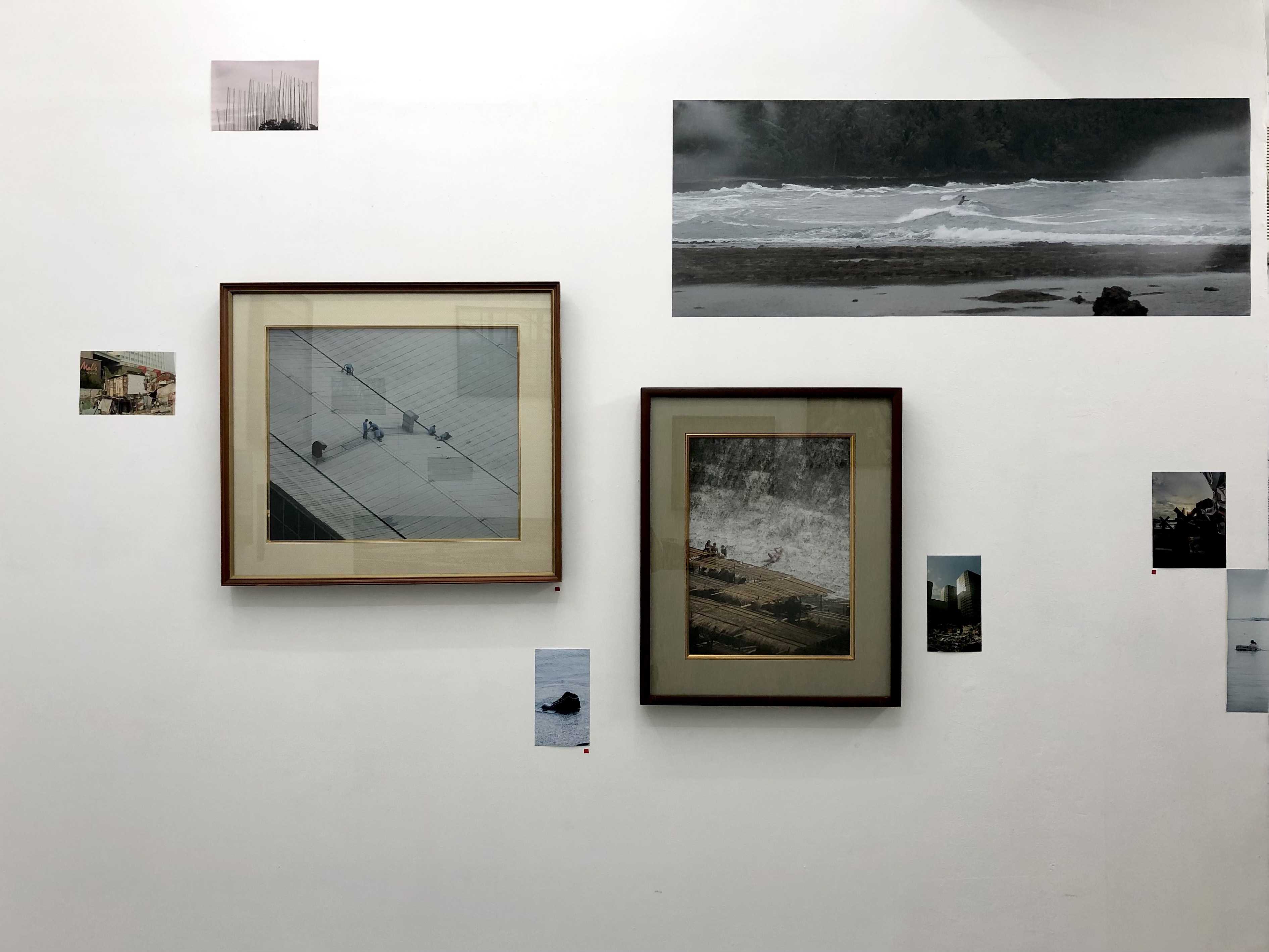Through the lens of Mike Olea, the city is revealed as a place that kills. In “Kanayunan Patungong Kalunsuran” (transl. From the Countryside to the City), Olea through photographs traced this killing as violence that is encoded in the daily life of the urban poor. What his photographs betray is killing that is purposeful, necessitated to maintain a city that lives through the death of its people.
Olea’s proposition unfolds immediately the moment one steps foot inside NO Community-run Space (NO) in Quezon City. Quaint in size, with a single room mere meters in height and width, it takes one sweep of the eye to glean the general idea of the show. Around a few dozen photographs comprise the exhibition—in various sizes and orientations, some framed, others stuck directly on NO’s three walls. On these walls, the images are arranged in asymmetric configurations similar to the previous shows mounted by the community-run venue. There appears to be no formula behind the layout, but there is generosity in the distance between the photographs, allowing room for their stories to breathe and etch their way towards us.
Zooming in on the images, Olea’s intentions are anchored by photographs that tell contrasts through space. Olea first toys with framing: several frames portray high-rise buildings towering over makeshift dwellings of wood, cloth, and tin sheets. Or a shopping mall and its corporate towers looming over rubble from demolished houses. A nearby frame depicts a protest against demolition, signifying the operations that force the marginalized out in favor of corporate and state interests. From homes, Olea then moves into the public sphere. Playing with exposure with an overhead shot of a roadway, he distinguishes between movement and stasis, space and congestion, by way of vehicles.
Spatial contradictions moor the conceptual underpinnings of the show. In the exhibition notes, space is argued as a medium and instrument of those with power and capital—a fact made salient through contrasts in Olea’s photographs. They surface the fact that the city is built on the erasure of the people that sustain it, eliminating them—perhaps not always yet still possibly in the literal sense—foremost by dispossessing them of their home, dignity, and life.
With this macro landscape of displacement now laid clear, Olea now turns our attention to the victims: how this historic process of dispossession that spans countryside and cities plays out in the lives of its prey. To be of service to the labor movement has always been at the center of Olea’s objectives as an artist, who is trained and experienced in the fields of photography, videography, filmmaking, and cinematography. The working class, then, also figures at the forefront of his photographs, laying out the ways they sustain the city that so resolutely tries to erase them.
In one image, an expanse of metal roofing spans the entire frame. In this vista of industrial operation, the laborers toiling for the construction of the roof are rendered minute, as if insignificant. There is also the recurrence of bodies and structures of water in Olea’s imagery. In the context of the exhibition, these are likely dams that are constructed at the expense of the surrounding local communities. They are, as in Olea’s photographs, left to bathe, fish, and travel on these waterways—scraps of a life that was seized from them in the construction of these structures.
It would seem as if there is nothing extraordinary unfolding in Olea’s photographs. Children playing in the late afternoon sun, laborers in their daily toil. Just the day’s typical fare. But it is exactly the exhibition’s point: for the urban poor, violence is encoded in the everyday. Violence is in the way their homes have been torn down to deprive them of their space in the city. Violence is living in makeshift dwellings when multi-million peso residences loom large over their community. Olea does not name any one particular city, but landmarks in the images indicate real locations. Even so, one does not need exact addresses to recognize this reality that unfolds every day, everywhere. Olea’s camera took up the task of tracing the structures that have rendered these conditions a normalized reality.
Representation has always been (and must always be) a sensitive concern, especially for the subjects that Olea has decided to take on. But far from the romanticizing and fetishizing tendencies of other media representations, the camera under Olea’s hand affirms the capacity of photography to stand against, instead of perpetuate, structural injustice and violence.
It is also necessary to pay attention to the role of spaces such as NO in providing platforms for initiatives such as the show. Aside from the physical configuration of the space, NO’s commitment to surfacing and addressing inequities in various contexts also rendered it an ideal setting for the scale and intent of the exhibition. NO’s exhibition space is a literal white cube in setup, but that is as far as the semblance goes. Established in February 2023, NO’s main priority is to provide curatorial, production, and sales support to the artists. Olea forms part of NO’s core team, along with Gino Javier, Franchesca Casauay, Francis Espina, Richard Ortizo, and Aris Santiago.

And with NO located in Teachers’ Village, Quezon City, the contradictions inherent in Kanayunan Patungong Kalunsuran become mirrored in place as well. The space, within a neighborhood of gated homes, is just a stone throw’s away from Barangay Krus na Ligas and the University of the Philippines—two locations that have been embroiled in neoliberal displacements in recent years. Thus, taking its context and intentions together, the exhibition makes manifest a city that is sustained by takings—deprivations and dispossessions that rob space and life from its people.
Kanayunan Patungong Kalunsuran runs until October 8, 2023 at NO Community-run Space, 45 Matimtiman Street, Teacher's Village East, Diliman, Quezon City.
Chesca Santiago studies anthropology and art at UP Diliman. Her art writing is guided by the intersection of the two disciplines, especially through the lenses of political economy and social justice.
Images courtesy of Mike Olea and NO Community-run Space.



